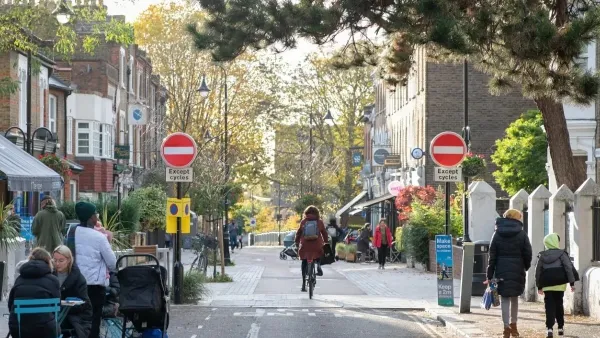At 195 hectares (480 acres), the Nine Elms redevelopment project being planned for the south bank of the Thames River will be "the most important regeneration story in London and in the UK over the next 20 years."
The Economist looks at the forces shaping, and being shaped by, the massive Nine Elms redevelopment project in central London. The city's green belt means the development will be three times more dense than the city as a whole; foreign money assures the project will be built, and the housing will sell; and a change in the local-government financing rules has earned the project the backing of local authorities.
"The development will not just transform central London. It will also illustrate some of the flaws in the way the city is run," says The Economist.
"Over time, the city’s organic growth has given it an informal charm. But when a lot of new buildings are going up in one place at once, there is something to be said for a more formal plan. That can happen more easily where there is a single landowner, as at Canary Wharf, than where ownership is fragmented, as at Nine Elms."
"Helen Fisher, Nine Elms’s programme director, describes the planning framework as 'tight-loose'. It is, she says, very prescriptive about some things, such as height and sight-lines to the river, while enabling a 'creative mix' of designs."
"Nine Elms will probably work better financially than aesthetically. A part of town that has not entirely shed its industrial heritage (the sewage works and the waste dump will remain, snuggled up beside the swanky new flats) is always a risky investment, but Nine Elms’s location is in its favour, as is the continued growth in emerging markets that is driving the London property market."
FULL STORY: What’s the plan?

Maui's Vacation Rental Debate Turns Ugly
Verbal attacks, misinformation campaigns and fistfights plague a high-stakes debate to convert thousands of vacation rentals into long-term housing.

Planetizen Federal Action Tracker
A weekly monitor of how Trump’s orders and actions are impacting planners and planning in America.

In Urban Planning, AI Prompting Could be the New Design Thinking
Creativity has long been key to great urban design. What if we see AI as our new creative partner?

Pedestrian Deaths Drop, Remain Twice as High as in 2009
Fatalities declined by 4 percent in 2024, but the U.S. is still nowhere close to ‘Vision Zero.’

King County Supportive Housing Program Offers Hope for Unhoused Residents
The county is taking a ‘Housing First’ approach that prioritizes getting people into housing, then offering wraparound supportive services.

Researchers Use AI to Get Clearer Picture of US Housing
Analysts are using artificial intelligence to supercharge their research by allowing them to comb through data faster. Though these AI tools can be error prone, they save time and housing researchers are optimistic about the future.
Urban Design for Planners 1: Software Tools
This six-course series explores essential urban design concepts using open source software and equips planners with the tools they need to participate fully in the urban design process.
Planning for Universal Design
Learn the tools for implementing Universal Design in planning regulations.
planning NEXT
Appalachian Highlands Housing Partners
Mpact (founded as Rail~Volution)
City of Camden Redevelopment Agency
City of Astoria
City of Portland
City of Laramie





























